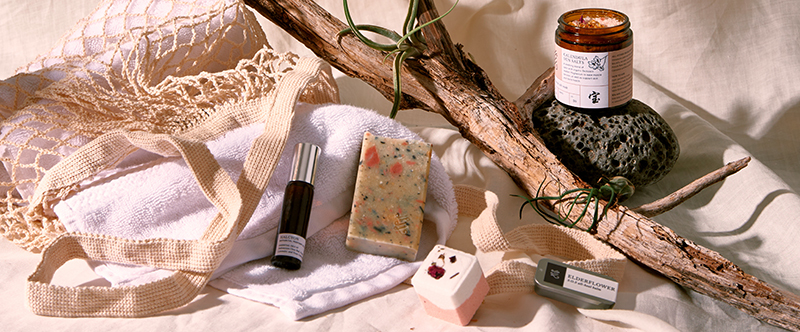Essential Oil Candles: Good for you — and the environment

Lighting a candle brings a moment of serenity and silence to our hectic lives. It can then take us back to the present with its gentle dancing flame and beautiful scent.
Today’s candle market is saturated with an immense number of scented candles to choose from with the almighty word plastered on it to lure us to buy: “Natural.”
What makes a scent truly natural? Here are some important facts to help the discerning consumer.

Essential Oil vs. “Natural” Fragrance
Essential oils are naturally occurring substances found in different parts of plants — the blossom, fruit, leaf, stem, bark, wood, or resin. Its aromatherapeutic use dates back thousands of years to ancient civilizations such as Egypt, Greece, and Rome, where they were used as healing agents for physical ailments, spiritual awareness, and even psychological healing purposes.
It is one of the oldest forms of medicine and continues to be one of the most natural ways to improve your overall well-being and state of mind.
Fragrance oils are manufactured in laboratories. While they can be derived from natural sources, they are never purely natural: The end-product is always mixed with synthetic compounds to mimic a scent from nature or to invoke a feeling, such as “Fresh Linen.”
Why aren’t more candles made with pure essential oils?
COST
Being a naturally harvested ingredient, essential oils are expensive to acquire and vary depending on the region the plant is grown, the yield of the harvest, the method of extraction, and other environmental factors.
The scent can vary, along with its quality and availability.
Fragrances, being artificially created, can be made available based on demand. Because of this, they are often quite inexpensive compared to essential oils.
As an example, while Sweet Orange essential oil can be three times the price of the synthetic fragrance equivalent, Bergamot essential oil is almost 10 times the price in comparison. Others, such as Rose, can be much more.
This is one of the reasons pure essential oil candles are limited in range. Some essential oils are just too costly to use in a candle.
We have also grown accustomed to stronger scents. Some may question the quality of an essential oil candle because of its subtlety within the room.
I’d counter by asking if one would prefer a candle with aromatherapeutic benefits or a candle that could cause migraines and nausea through the release of toxic fumes when left lit for too long.
TIME AND RESEARCH
Essential oils are easily depleted. This can be a problem during the candle-making process, making them sensitive and somewhat difficult to work with.
Due to this, much more research, experience, and testing goes into making an essential oil candle than a synthetic one.

The Harsh Truth
The odds are stacked against pure essential oil candlemakers. Not only do we have to consider much lower profit margins to stay competitive with “natural” fragrance candles, but we also must factor in the cost of time and research that goes into building a scent suitable in a high-heat environment — while hoping the customer will not be disgruntled by its gentle scent.
It is in patience and hope that this knowledge gets passed around. But I have faith that, through time, the candle industry will shift toward a more honest and conscientious candle — for I have been, told time and again, that once you’ve lit a pure essential oil candle, you can never go back.





